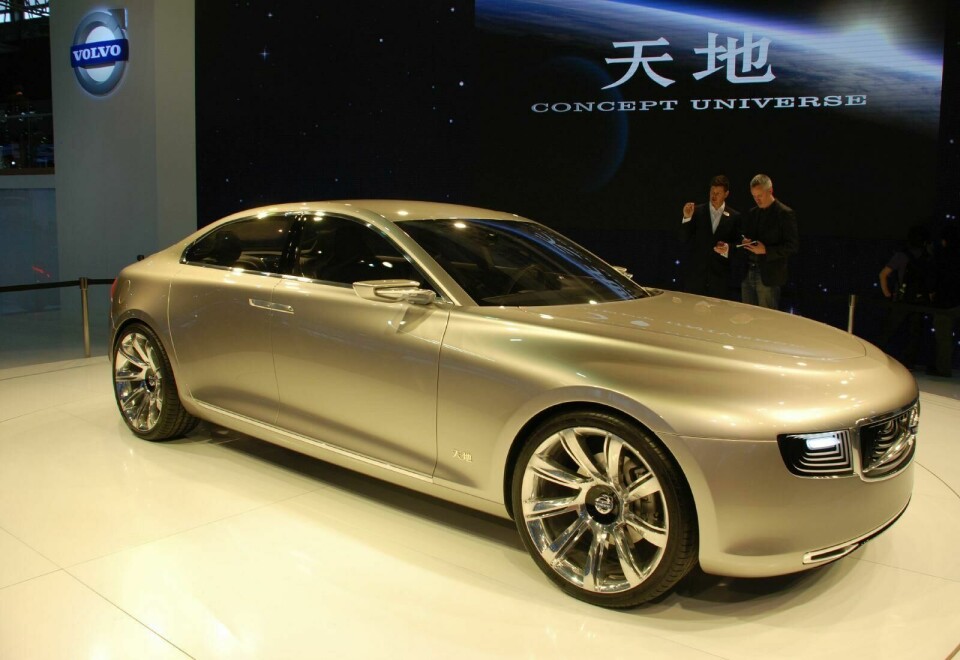
Design Review: Volvo Concept Universe
The Volvo Concept Universe marks a new era for the company and represents a couple of firsts for Volvo









The Volvo Concept Universe marks a new era for the company and represents a couple of firsts for Volvo.
The first of these firsts, if you will, is that this car marks the return of Vice President of Design, Peter Horbury, the man who led Volvo through its design revolution during the 1990s and early 2000s. The second is that this car is the inceptive creation under Geely’s ownership of Volvo. In many ways this is a line in the sand for the future of the company. So where does the Universe pitch Volvo up on that metaphorical sandy beach?







The most obvious thing to say about the car is that its format is entirely conventional. As may have been expected considering Volvo’s success in the Chinese limousine market with its top-selling S80L, the Universe is a large (4,960mm) sedan. Yet if its format is predictable, its execution is rather less so.
If you attended the Shanghai show, your initial impression of the car would have been determined by the position of its turntable as you approached the Volvo stand. If that first look took in a sweep of its flanks, the chances are your faith may have been reinstated in Volvo’s design direction.
You probably would have been mesmerized by the beguiling subtly of its surfacing. There’s a wonderful interplay between the belt line and the surface that runs off the front fender. While the belt line actually drops - lending its side view an elegant air - the front fender surface rises rearwards, giving the illusion of a wedge profile from certain angles. Its interaction with the blown rear fender surface produces a negative surface in the lower portion of the doors; a development of the sculpting Horbury introduced in the seminal 2000 S60.
We say seminal because, in retrospect, the first-generation S60 started the current trend towards ‘four-door coupés’ (for want of a better terminology), and its distinctive C-pillar character line reappears here. Overall though, the Universe’s rear aspect is rather disappointingly lacking in distinction, particularly when compared to the wonderfully precise ‘section-through’ tails, first shown in Horbury’s 1992 ECC concept. It’s a clear evolution of the themes created by the current, Steve Mattin-era S60, yet a clean break from what many feel to have been a design dead-end for the brand may have been more successful.
Its nose was clearly inspired by the 1940s PV544 (is this the first retro Volvo?) yet sits awkwardly on the front of the Universe. The relationship between lamp, grille and hood is odd, the low-set DRG creating an unnaturally large surface above the center of the grille, while the unusual plan view of the hood visually disconnects the face from the rest of the car. This is exacerbated by the lamp graphics, which draw the eye to the center of the car, while their lack of wrap-around into the fenders only exacerbates the issue.
Geely’s Chairman, Li Shufu asked Volvo’s design team to create “something intriguing in the nose,” which it certainly has, yet one can’t help wonder how late in the car’s development this request came, judging by its integration. (As a counterpoint, there is a school of thought that suggests that Asian markets ‘read’ anatomical faces differently to others.)
This is a shame because the detail execution of the grille, especially, is very successful. The concentric, layered elements are said to be extremely thermally efficient, yet the real story is in its Chinese influence. It’s the result of a rather more successful conversation between Horbury’s team and Shufu. The grille’s illuminated layers represent the spears of light that appear from behind the moon during a lunar eclipse - an occasion that has a real cultural significance in China. It may sound odd to westerners, but as explained in our recently-published essay, China Design Now, the symbolism of a designed element is often as valuable as its function.
The model shown in Shanghai didn’t have a full interior, so we shall leave a critique of interior designer, Conny Bengtsson’s, work until we see it (which we are promised in the near future). However, one extremely interesting feature is the use of white porcelain detailing, with traditionally Chinese blue painted detailing.
It’s thoroughly refreshing to see direct design references to the culture of Volvo’s new parent company (wouldn’t it be great to see a touch of India in future Jaguar interiors?) and perfectly encapsulates Peter Horbury’s desire to shift the company back to the humanistic design values he worked so hard to develop during his previous tenure.
There is a feeling that the Concept Universe was designed and completed in somewhat of a rush (hence the lack of interior) and there are some unsuccessful areas of its design. Its nose is the most obvious area to criticize, yet its theme shows a great deal of promise, with refinement and is far preferable to the gloopy, cartoony snouts applied to the C30, S60, XC60 and C70. And if the bodyside surfacing is the only aspect of the car that is carried forward then this car can be seen as a success.
It’s not quite the confident, distinct line in the sand one might have hoped for, but the Universe has at least moved Volvo away from the area of the beach overcrowded with its German rivals and back to its own, understated and sheltered cove. And this time it has a couple of Chinese souvenirs.
Related articles:
Interview: Peter Horbury, Vice President Design, Volvo Cars
Essay: China Design Now
Auto Shanghai 2011 - Trends & Overview



